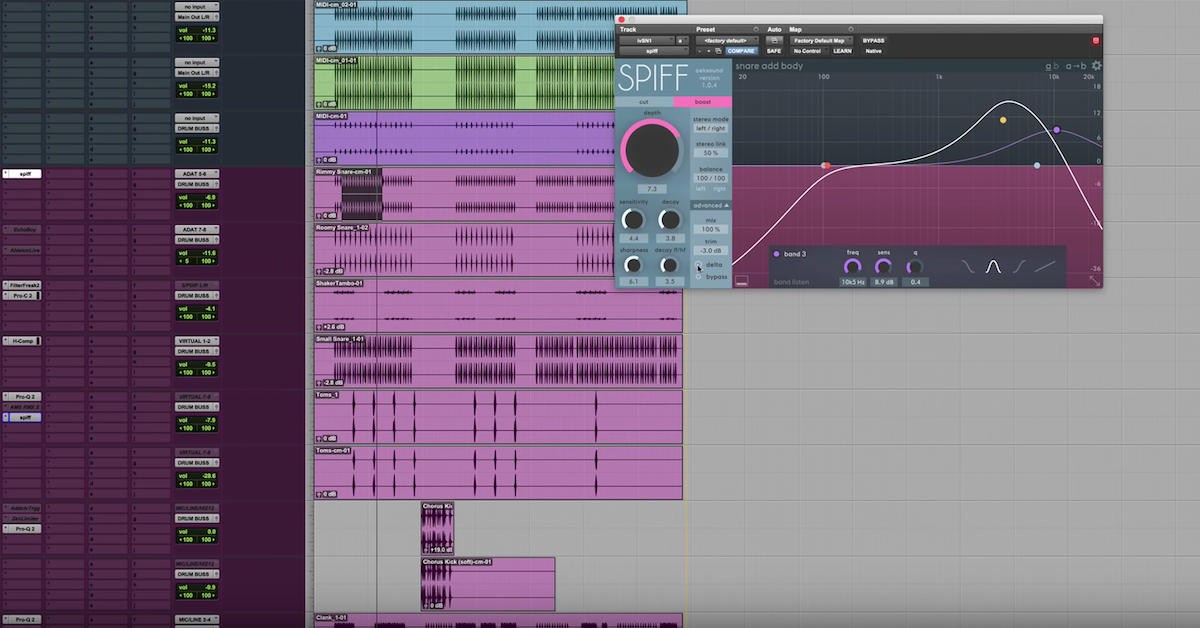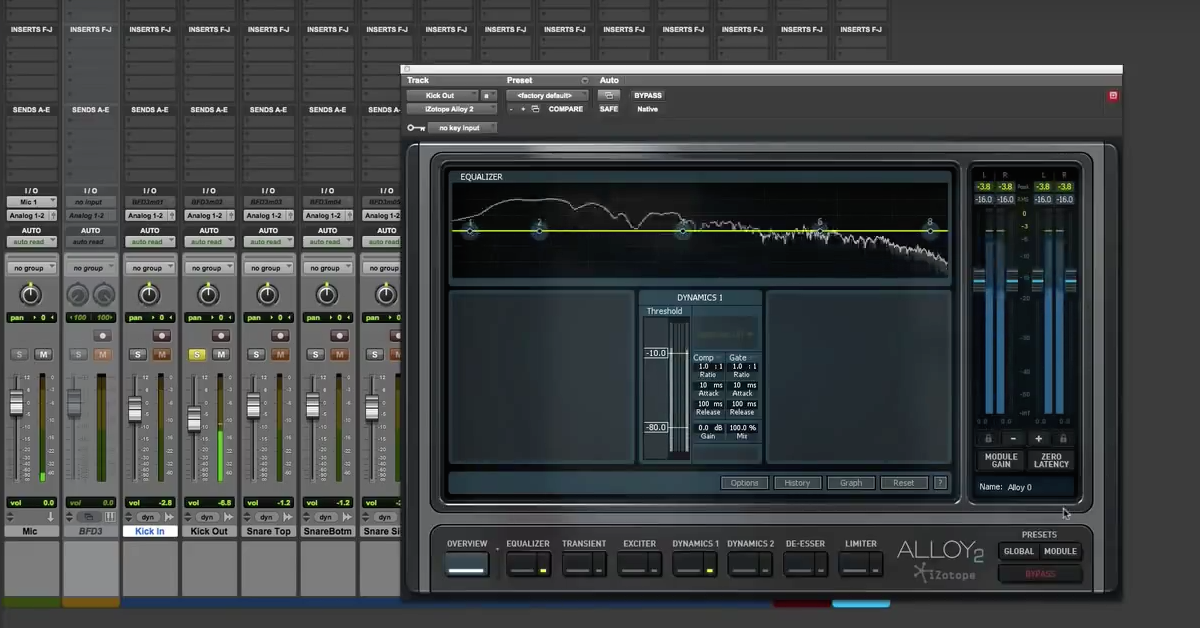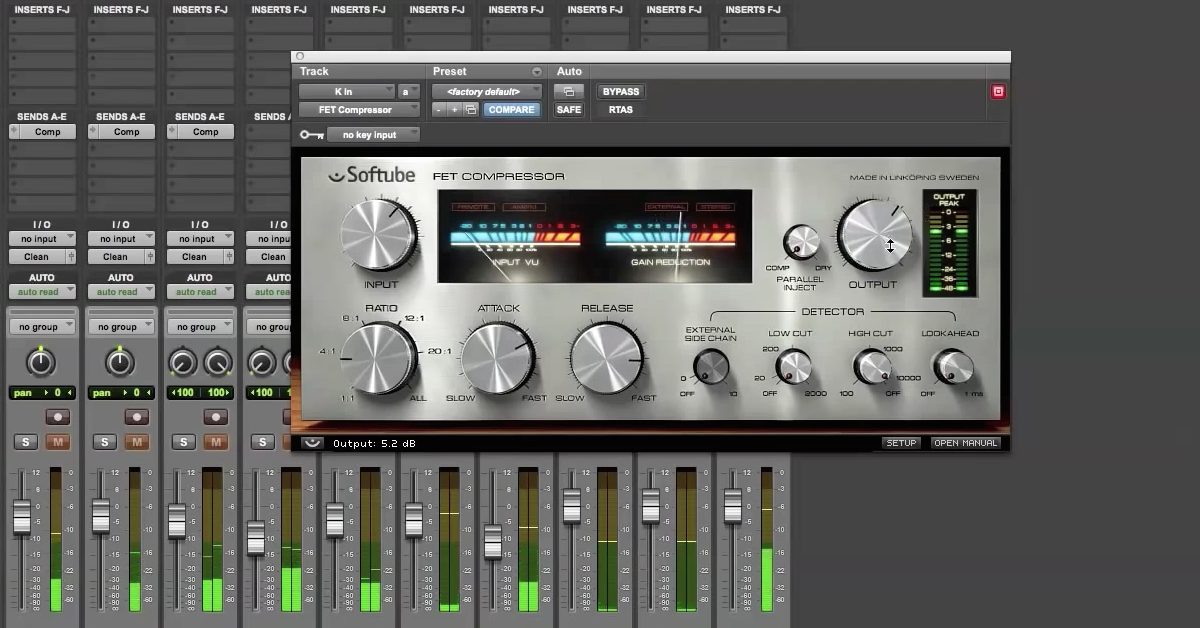4 Tips for Mixing Great Sounding Pop Drums
Article Content
Much of today’s popular music is designed to be danceable, and when hoping to elicit a physical response from the listener, perhaps no part of the musical arrangement is more important than the drums. Even modern pop mixes that aren’t specifically crafted to make audiences dance still feature drums with impressively powerful and punchy transients.
Whether the arrangement features electronic or acoustic drums (or a hybrid of the two), drums with impact and clarity are almost essential when mixing pop. Here are some tips and tricks that can help give your drums the fidelity, weight and energy common to today’s modern pop mixes.
1. Stay Current
“Pop” is such a strange term. Derived from popular, technically-speaking, does something need to garner acclaim from a wide audience to qualify as “Pop”? Because, while I hear things I’ve worked on playing over the speakers in restaurants and stores, used in TV commercials, etc. I’ve also worked on plenty of projects that made very little commercial impact but can still be defined as Pop. I don’t know the answer to the aforementioned question, but it’s a valid one to ask. I really like this breakdown on the subject.
In any art form, when something works, other artists tend to copy it. Sometimes the copying artist will add his or her own unique twist on the original, sometimes they blatantly replicate it. Generally, after some period of time, the audience becomes familiar with the style, and the trend either evolves or dies off. Perhaps the trend makes a resurgence decades later, (as we are seeing with the 1980’s infatuation producers and audiences seem to have currently.) Try to keep these things in mind when producing or mixing drums.
A technique which has been adopted into the “dark pop” genre is the use of a closed hi-hat sound typical to the ones found in vintage drum machines, which is then performed or programmed to weave between a variety of rhythmic patterns. We now hear this technique used in traditional and unfamiliar contexts regularly. Will it be something commonly used 3 years from now? Maybe, maybe not, but it’s worth knowing how to execute this technique if what you’re trying to do is create something that becomes popular, or at the very least, sounds popular.
2. Become a Compression and Transient Designer Master
Compression, whether it be applied to drums, vocals, or the entire mix, is a huge part of the modern pop sound. Because there are so many fantastic resources or how to use compression to give your drums punch, I’ll skip ahead to another extremely valuable tool: Transient Designers or Shapers.
I still remember the first time I heard a snare drum run through a hardware SPL Transient Designer.

The size, impact and tightness was something I had never experienced before. That particular unit only has 2 controls per channel: attack and sustain. There are a wide variety of plugin versions of this type of processing on the market that I use to enhance the drums on my pop mixes. I’d go as far as saying that transient shapers have become one of my “secret weapons” when mixing, regardless of genre. Here are a few of my favorites:
This is a relatively new transient controller, and represents the second plugin from oeksound that I can not live without, the first of which is soothe, a dynamic resonance suppressor. What’s so unique about Spiff is that it makes adjustments based on the frequency content of the incoming signal, meaning you’re only affecting the parts of the sound you want.
Let’s look at how I may use Spiff on a typical acoustic snare drum, for instance. A snare drum sound consists of two main components- the deeper, resonant tone of the shell of the drum, and the high-frequency rattle created by the snare, which is the series of small wires attached to the bottom of the drum that vibrate when the drum is struck. Without these wires engaged, a snare drum sounds more like a higher pitched tom. Because Spiff allows you to focus in on specific frequencies, I can increase or decrease the transient of either the lower frequency shell or the higher frequency snares.
Another frequency-dependant envelope shaper, Envolution possesses the tidy design and pristine sound common to Sonnox plugins, with some additional features that make it a fantastic transient shaping tool. On a recent pop mix, I wanted the snare drum (which was comprised of numerous electronic samples) to be hyper-punchy, but also extremely tight. Envolution made quick work of this task via a 6 dB boost of the transient, and 10 dB cut of the sustain, with a few tweaks to the “profile” sections of each. I employed a small amount of the ‘warmth’ feature to give the drum a bit of harmonic saturation.
Envolution is a deep and versatile plugin, and would work on plenty of different sources, but I find it especially great for the larger-than-life kicks and snares common in most modern pop mixes.
A lot of newer waves plugins do the ‘hyped’ sound really well, making them a great fit for mixing pop, and Smack Attack is no exception. It works similar to other transient shapers in that it offers controls over Attack and Sustain, but what I love about Smack Attack is the ability to fine-tune the shapes of these parameters. Combine these tools with the ability to limit and clip your signals, and you can meticulously craft in-your-face drum sounds.

3. Don’t Be Afraid to Augment and Replace Drums
It’s not cheating. Engineers that have worked on top-selling pop records have been doing it for decades, accept it, learn it, and move on. The problem: Producers or recording engineers may leave you with drums that are lacking in one way or another, it may be tone, room, punch, crack, etc. The solution: Use samples to bring back what the original drums are missing.
While you could certainly manually chop up and lay in samples beneath your original drums, I endorse using methods that are far less time-consuming. There are products you can insert directly on your drum tracks (Drumagog, Addictive Trigger, Slate Trigger) that allow you access to a wide variety of high-quality samples which can be played alongside the original drums. You can also generate MIDI triggers from the aforementioned plugins or other utilities, and then use these MIDI triggers to play back samples of your choosing, via virtual instruments or with a sampler found within a DAW.
This is often one of the first tasks I handle when mixing pop. I want my drums to hit a certain way, and sometimes, the tracks I’m delivered provide a solid roadmap for where the drum sound should go but don’t paint a complete picture. In the tracks featured for my Mixing Pop course, the drums needed an 80’s-inspired, gated reverb sound, with a touch of modern. I augmented the drums that the producer provided me with the samples of my choosing and then used the UAD AMS RMX16 Expanded plugin to really nail the non-linear vibe.
Again, you can completely change the tone, space, depth, impact, size, and even genre by tweaking the drum sound. Much like the aforementioned trap hi-hat method, there are certain kick or snare sounds that are in vogue, but be aware that some trends in pop mixing tend to shift quickly, so choose your samples wisely.
There are a staggering amount of sample libraries and virtual instruments available, so it can be hard to sort through the noise, but my personal favorites are the Addictive Drums (especially the United Pop ADpak for when going for a powerful acoustic drum sound), most everything from That Sound, and of course, Splice. If you want even more control when crafting your drum sounds, you can look into plugins that offer great customization, like KICK 2.
4. Build Around the Drums
I typically build the rest of the arrangement around the drums regardless of genre, but I find it especially helpful in pop.
I’ll start by laying in my samples, and once that is done, I turn my monitors up really loud and make changes with equalization, compression, saturation, etc. until I start moving. Sometimes it’ll just be bobbing my head or tapping my toes, sometimes the rest of my body joins in (no, you won’t see footage of me dancing in my new course) but I know that if my body feels like moving, my mix is going in the right direction.
So much energy and character can be squeezed out of the drums. Not only are they likely responsible for the most prominent transients on any given mix — and therefore attract a lot of the listeners’ attention — but because drums are also usually comprised of a series of individual instruments, they occupy a great deal of the frequency spectrum. I like to view how the drums are processed and balanced as a mix unto itself, and once I have this mix dialed in, I’ll focus on the other elements.
There are additional, less noticeable techniques, such as subtle volume automation of the different layers throughout the course of the song, or applying slight sidechain compression to the other elements of the arrangement so that when the drums hit, the non-drum elements are brought down in volume ever so slightly, ensuring that the drums cut through loudly and proudly.

![oeksound Spiff: Adaptive Transient Processor [Plugin Review]](https://i.ytimg.com/vi/qokyWL6xX6M/hqdefault.jpg)






